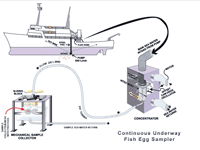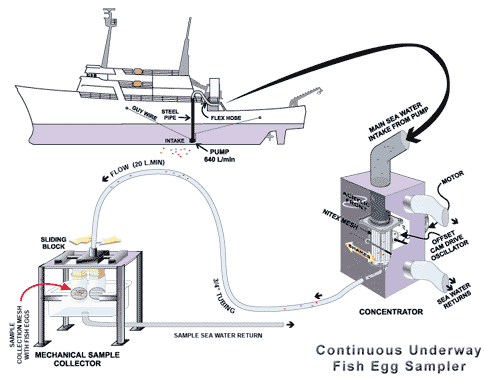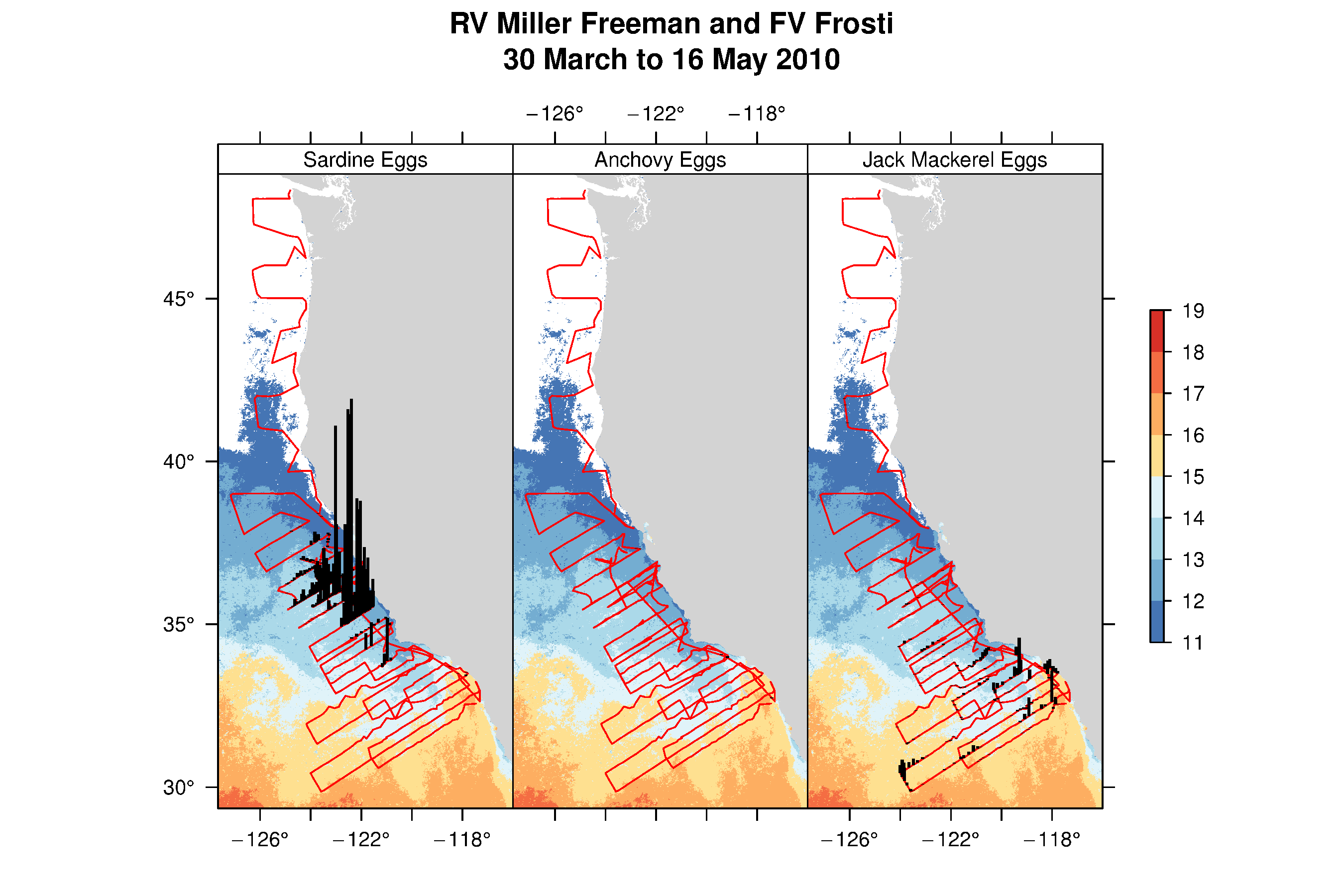 |
The Continuous Underway Fish Egg Sampler (CUFES) is an instrument used to collect pelagic eggs of fish and related hydrographic data from ~3m depth on a moving ship. These samples and data, typically collected during winter and spring cruises, are used to investigate spawning habitat and estimate spawning biomass. When large aggregations of fish eggs are present, Pair-o-vet vertical net tows are done to calibrate egg density.
The CUFES system consists of a inboard or outboard submersible pump, concentrator and sample collector. Water is pumped continuously from a fixed depth (surface to 3 m) to the concentrator on board ship. Eggs and similarly-sized particles are retained in the sample collector. CUFES operates continuously under most sea conditions.
Description
Water is continuously pumped at ca. 600-700 liters per minute from 3-m depth to the concentrator. Particles the concentrated by an oscillating net (e.g. of 500 micron Nitex mesh) in approximately 3% of the flow. The filtrate is discharged overboard. The concentrate passes to the sample collector where particles are retained over sequential sampling intervals (e.g. 5-30 min) on a cod end of the same size mesh as used in the concentrator. Fish eggs are usually counted at sea prior to preserving the sample. Simultaneously, ancillary data are continously collected for date, time, position, temperature, salinity, and chlorophyll a fluorescence. The system operates continuously and under nearly all sea conditions, providing a real-time estimate of the volumetric abundance of pelagic fish eggs at pump depth. CUFES-derived estimates of volumetric abundance are regularly compared with estimates of areal abundance made using vertically-towed nets such as the CalVET or bongo. CUFES has been used to sample the eggs of menhaden, pinfish, sardine, anchovy, round herring, and mackerels off the United States, Mexico, Peru, Chile, France, Spain, Portugal, and South Africa. 
CUFES on CalCOFI
On Winter, Spring, and Summer cruises, samples are examined, preliminary egg counts performed, and the samples are preserved for further analysis on-shore.
 Additional Information
Additional Information
- Southwest Fisheries Science Center Egg Distribution Maps for Sardine, Anchovy, and Jack Mackerel
